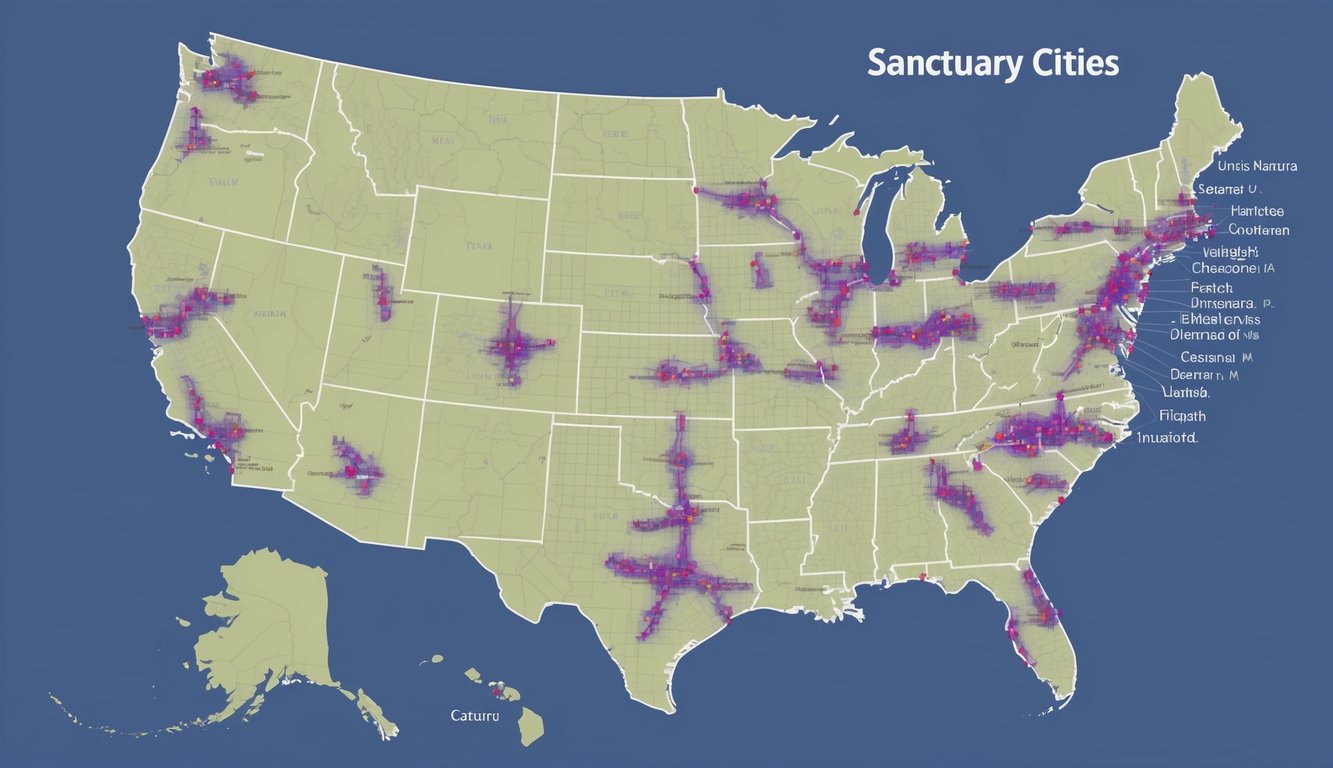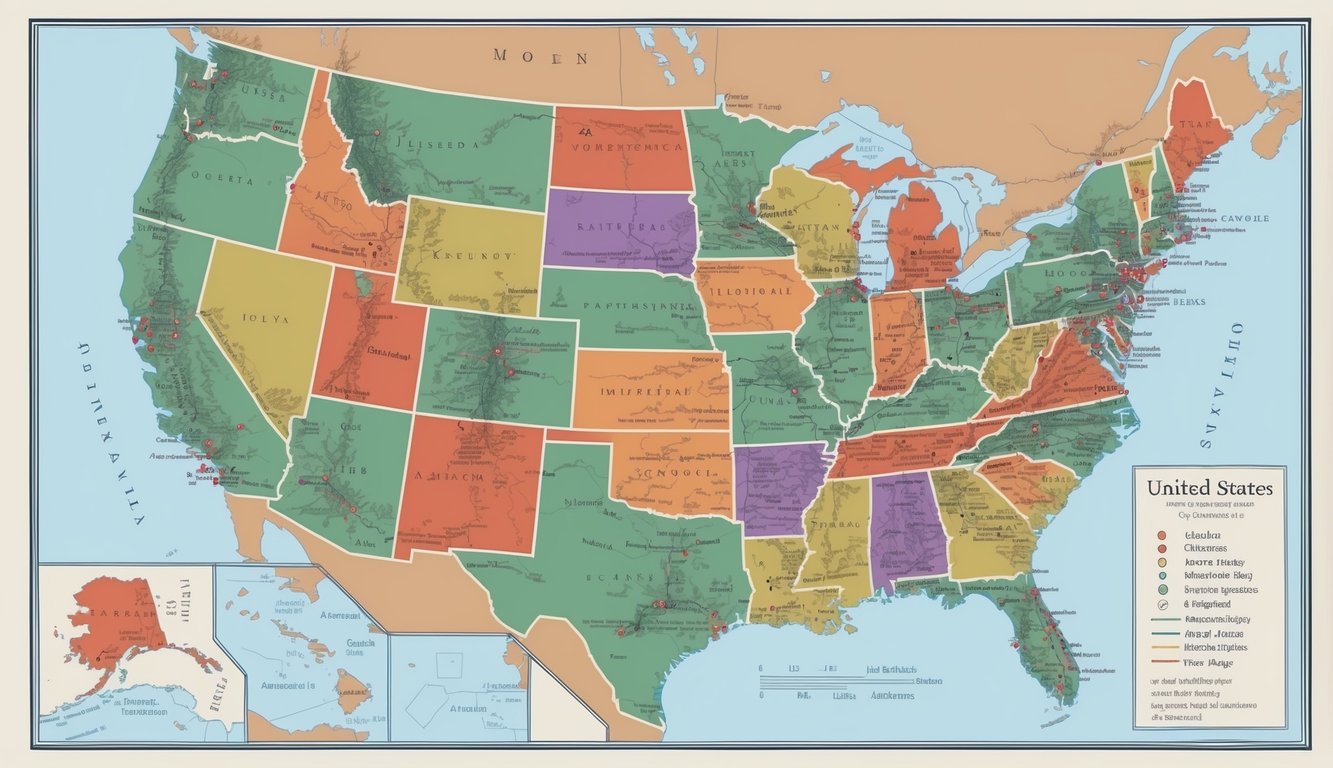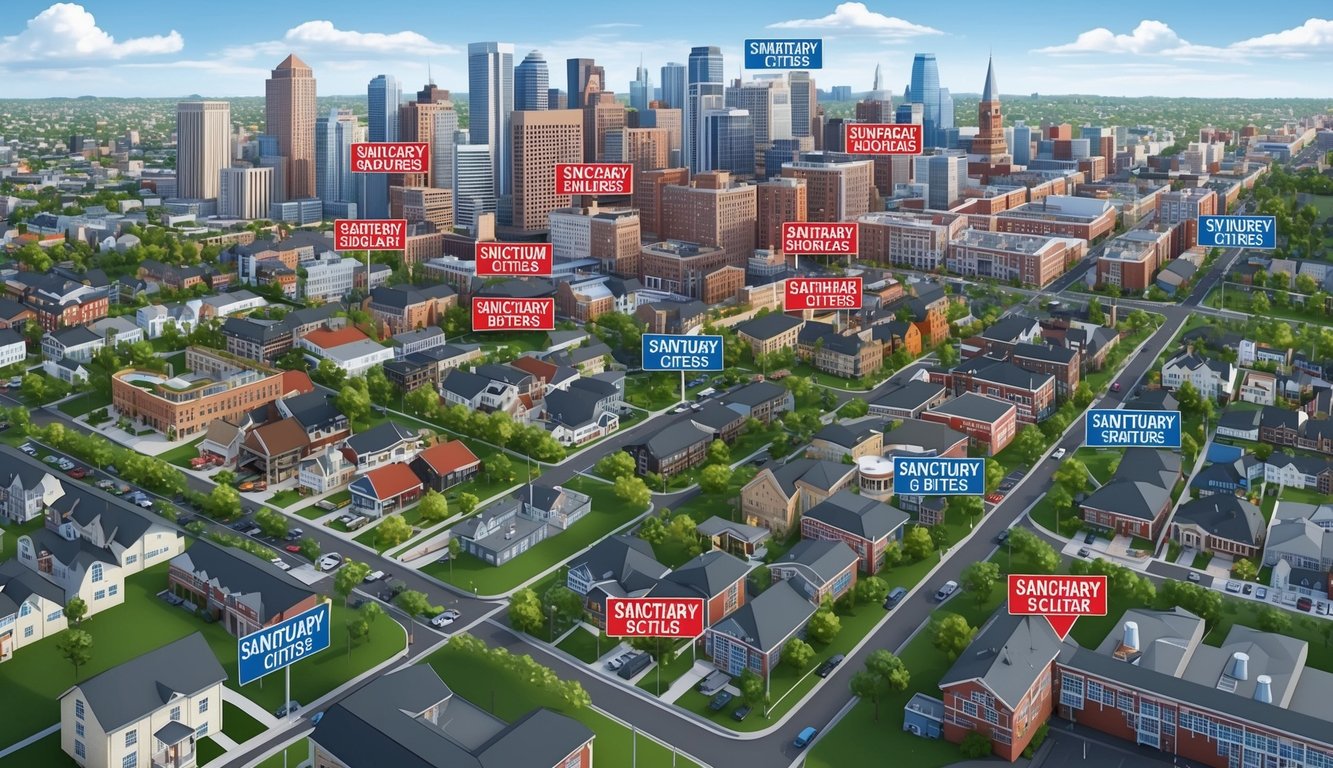Don’t Miss Out On This Unique Astrological Opportunity
Are you tired of spinning your wheels and getting nowhere? Simply put, you’re out of sync: you’re out of alignment with your astral configuration.
But: there’s a kind of map that can help you reclaim your alignment. Think of it as your own personal blueprint to success and happiness: a blueprint that will help you live your most amazing life.
Get started here.
Have you ever wondered how many sanctuary cities there are in the United States? It’s a topic that generates a lot of discussions, especially when it comes to immigration and law enforcement.
Sanctuary cities are places where local governments limit their cooperation with federal immigration authorities.
These cities adopt policies that can offer some protection to undocumented immigrants, making them controversial yet significant in the debate over immigration policy.
There are over 560 sanctuary cities, counties, and states in the United States. This number can vary based on how sanctuary policies are defined and categorized.
The presence of these cities has sparked debates about the role of local governments versus federal immigration enforcement.
Not everyone agrees on what qualifies as a sanctuary city, which leads to different interpretations and lists.
If you’re interested in understanding how these cities impact communities and the broader immigration dialogue, this post will take you through everything you need to know.
Dive into the complex landscape of sanctuary cities to explore how they came to be and what they mean for immigrants living in the U.S.
Key Takeaways
- Sanctuary cities limit cooperation with federal immigration authorities.
- There are over 560 sanctuary jurisdictions in the U.S.
- Their impact sparks debate about immigration and local vs. federal power.
Historical Context and Definitions

Sanctuary cities in the United States have developed through a mix of legal actions and social movements.
Their purpose is to provide safe haven for immigrants.
In this context, understanding what qualifies as a sanctuary city and the history behind these policies helps in grasping their role and impact.
What Is a Sanctuary City?
A sanctuary city is a place where local laws are designed to limit cooperation with federal immigration enforcement.
These jurisdictions prioritize community trust and safety over enforcing national immigration laws.
Decisions on whether to detain people based on immigration status differ from place to place.
Local governments in sanctuary cities often refuse to use their resources to assist federal authorities in deportation actions.
The focus is instead on local priorities, like policing serious crimes.
Not all cities have the same policies, so it’s important to know that specific rules and practices vary.
Sanctuary cities are sometimes in conflict with federal laws, though they operate within legal frameworks that emphasize local control.
This means your city might make its own choice about participation in federal immigration laws.
Development of Sanctuary Policies
The development of sanctuary policies in the United States goes back to the 1980s.
Early actions were driven by faith-based groups aiming to protect Central American refugees fleeing violence.
These communities pledged protection and support.
As the years passed, these efforts expanded and became more formalized.
By the 2000s, major cities had adopted sanctuary policies.
Cities shaped these policies in response to changes in federal immigration laws and pressures from local communities.
Different cities and states have their own versions of sanctuary policies.
Some states even have laws that guide how cities interact with federal immigration authorities.
You might have noticed this changing over time, as political climates shift and laws are updated.
Sanctuary Cities Across the United States
Sanctuary cities and states have developed throughout the U.S., creating varied approaches to immigration enforcement.
You’ll find these policies influencing how different regions handle cooperation with federal authorities.
States with Sanctuary Policies
Several states have adopted sanctuary policies at the state level. California, Oregon, and New York are leading examples of sanctuary states.
They have laws that restrict local law enforcement from cooperating with federal immigration authorities.
These policies are aimed at providing safer environments for undocumented immigrants.
For example, California’s law limits the circumstances under which state and local law enforcement can notify federal agents about the release of undocumented immigrants. New Mexico and Washington also have similar laws that prioritize protecting immigrant communities.
Prominent Sanctuary Cities
Some cities are well-known for their sanctuary status. Chicago, San Francisco, and Los Angeles are prominent sanctuary cities where local governments have established policies to limit cooperation with federal immigration authorities.
These cities often focus on community trust, emphasizing that local resources should not be used for federal immigration enforcement.
They believe this approach helps build better relationships between police and immigrant communities, making these cities feel more inclusive. Baltimore and Denver are other examples where sanctuary policies play an important role in local governance.
Mapping Sanctuary Jurisdictions
Across the U.S., there are many sanctuary jurisdictions, including cities and counties.
A full map of sanctuary areas highlights diverse locations that enact these policies.
States like Colorado and Illinois have areas where sanctuary policies are in place.
Mapping helps you visualize how widespread these jurisdictions are.
From New York City to smaller areas in rural regions, these maps underscore the variety of places where sanctuary policies exist.
Understanding this geographic spread is important for recognizing how these policies shape community dynamics across the nation.
Impact and Controversy

Sanctuary cities are surrounded by discussions about their effects on public safety and community trust.
They also face intense debates over federal funding and have varied impacts on immigrant communities.
Supporters argue that these cities foster safer environments by encouraging undocumented immigrants to cooperate with law enforcement without fear of deportation.
Critics, however, claim that sanctuary policies may inadvertently shield criminals from prosecution, fueling broader political and legal disputes.
Additionally, some discussions around immigrant communities intersect with concerns about mega church dark secrets, as both topics highlight issues of trust, accountability, and the role of institutions in shaping societal values.
Public Safety and Community Trust
Sanctuary cities often argue that public safety improves when residents, including undocumented immigrants, feel safe speaking with police.
Many undocumented immigrants are hesitant to report crimes if they fear deportation.
You’re more likely to find that community trust increases when cities do not help with immigration enforcement.
This can lead to better cooperation between police and immigrants.
Critics claim that these policies might give “criminal aliens” a safe place to hide, which could endanger others.
The true effect on crime rates varies, as demonstrated by differing statistics from cities across the U.S.
Legal Battles Over Federal Funding
The sanctuary city debate involves complex legal arguments, especially about federal funding cuts proposed by the Trump administration.
The administration aimed to withhold funds from any city refusing to cooperate with ICE detainers.
Detainers are requests for local law enforcement to hold individuals for ICE.
Challenges about these cuts often ended up in court.
The Supreme Court has played a role in deciding if these actions were legal.
Lawsuits have clouded the future of federal funding for sanctuary policies.
Legal battles emphasize questions about state rights versus federal powers.
Case Studies: Effects on Immigrant Communities
Sanctuary cities generally aim to protect immigrant communities from increased deportation threats.
For many immigrants, living in these cities may mean lower chances of deportation for minor offenses.
This potentially allows them to live without constant fear of being separated from their families.
Case studies show varied impacts, depending on how strictly a city enforces these policies.
Some cities, like San Francisco, see reduced fear among immigrants and improved relations with local police.
However, it does not eliminate the deportation risks entirely, as ICE can still operate independently within the city limits.
Resources and Support for Immigrants
Immigrants often rely on a mix of local services and non-governmental organizations to find resources like housing, legal advice, and language classes.
These support systems are important for helping immigrants adjust and find their footing in new communities.
Local Services for Immigrant Populations
Many cities offer services to help immigrants feel at home.
These might include community centers that offer language classes or job training programs.
In some areas, city services provide legal help to those navigating immigration status issues, which can be crucial for undocumented immigrants.
Local libraries can also be a treasure trove of resources.
They may have bilingual staff, free internet access, and events designed to connect immigrants with useful information.
Access to affordable public transportation and healthcare services is also vital for immigrants trying to integrate and become self-sufficient in their new environments.
Non-Governmental Organizations and Advocacy
Several non-governmental organizations (NGOs) play big roles in supporting immigrant communities.
These groups often offer free or low-cost legal assistance to refugees and undocumented immigrants.
You might find help from organizations like the American Immigration Council, which provides educational resources and advocacy.
Additionally, NGOs can be important support networks that offer counseling, housing assistance, and emergency services.
By collaborating with other advocacy groups, these organizations advocate for better immigration policies and work to create safer communities. Fundraising events and volunteer networks are commonly used to extend their reach and impact.
Frequently Asked Questions

Sanctuary cities limit cooperation between local and federal authorities on immigration enforcement.
These cities have various policies and characteristics that define their status and impact on communities and law enforcement.
What determines if a city is considered a sanctuary city?
A city is considered a sanctuary city when it adopts policies that limit involvement in federal immigration enforcement.
This means local authorities may not assist federal officials in identifying or capturing undocumented immigrants.
What are the defining characteristics of sanctuary cities in the United States?
Sanctuary cities often have ordinances that prevent city employees from questioning individuals about their immigration status.
They also restrict sharing personal data with federal agencies.
This creates a safer environment for immigrants to live without fear of deportation.
Which are the most populous sanctuary cities in the US?
Some of the most populous sanctuary cities include New York City, Los Angeles, and Chicago.
These cities have large immigrant communities and offer various protections under their sanctuary policies.
How do sanctuary city policies vary across different states?
Sanctuary policies can vary widely.
Some cities may offer full protection, while others may only limit certain cooperation with federal authorities.
These differences often reflect the political and social climate of the region.
What impact do sanctuary cities have on local law enforcement?
Sanctuary city policies often shift the focus of local law enforcement to community policing rather than immigration enforcement.
This can build trust within immigrant communities, encouraging cooperation with local police on other issues.
How does a sanctuary city’s status affect its handling of immigration-related matters?
A sanctuary city’s status often means it will not use local resources to assist in federal immigration enforcement.
This can include refusing to hold individuals in custody beyond their release date based solely on immigration status.



